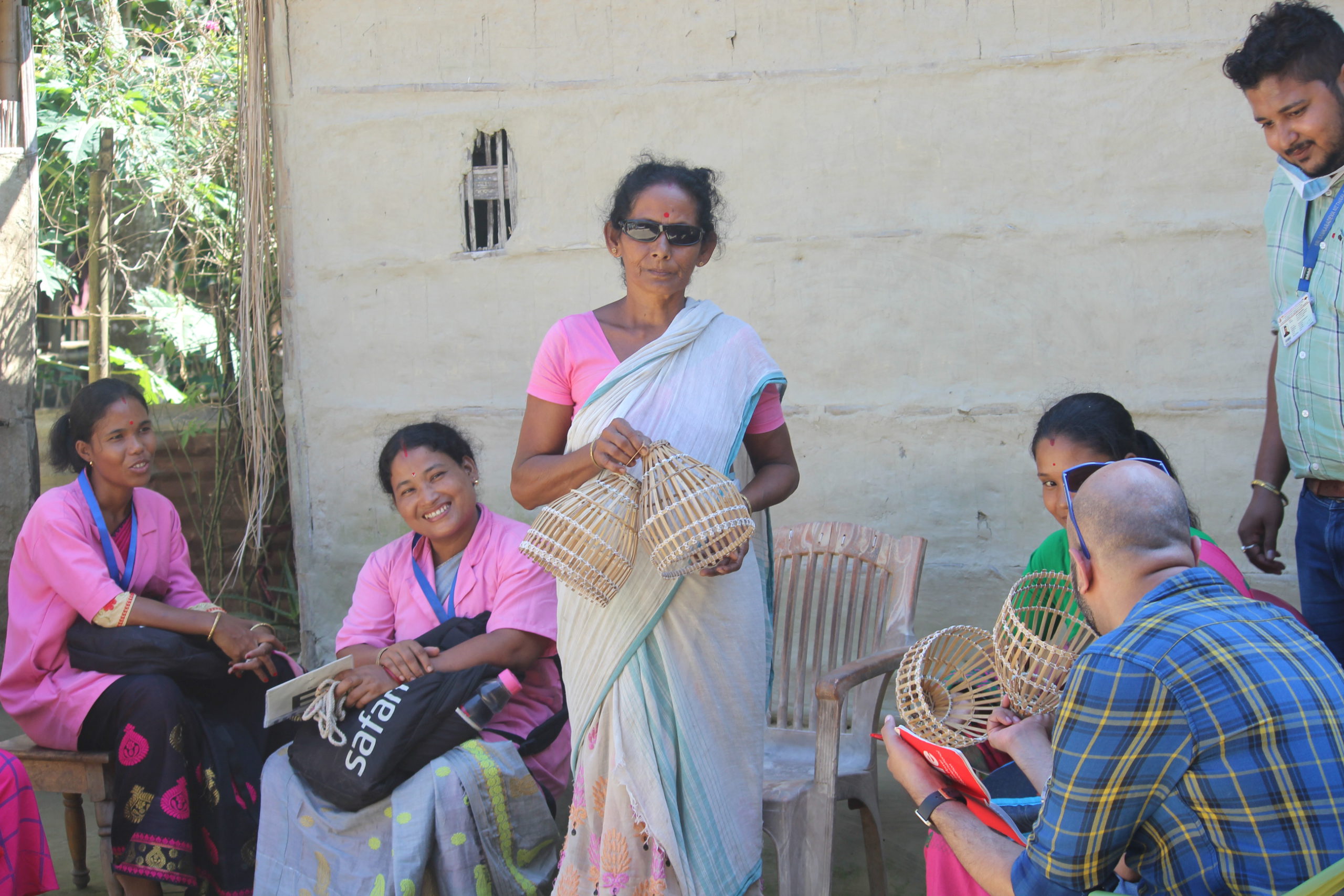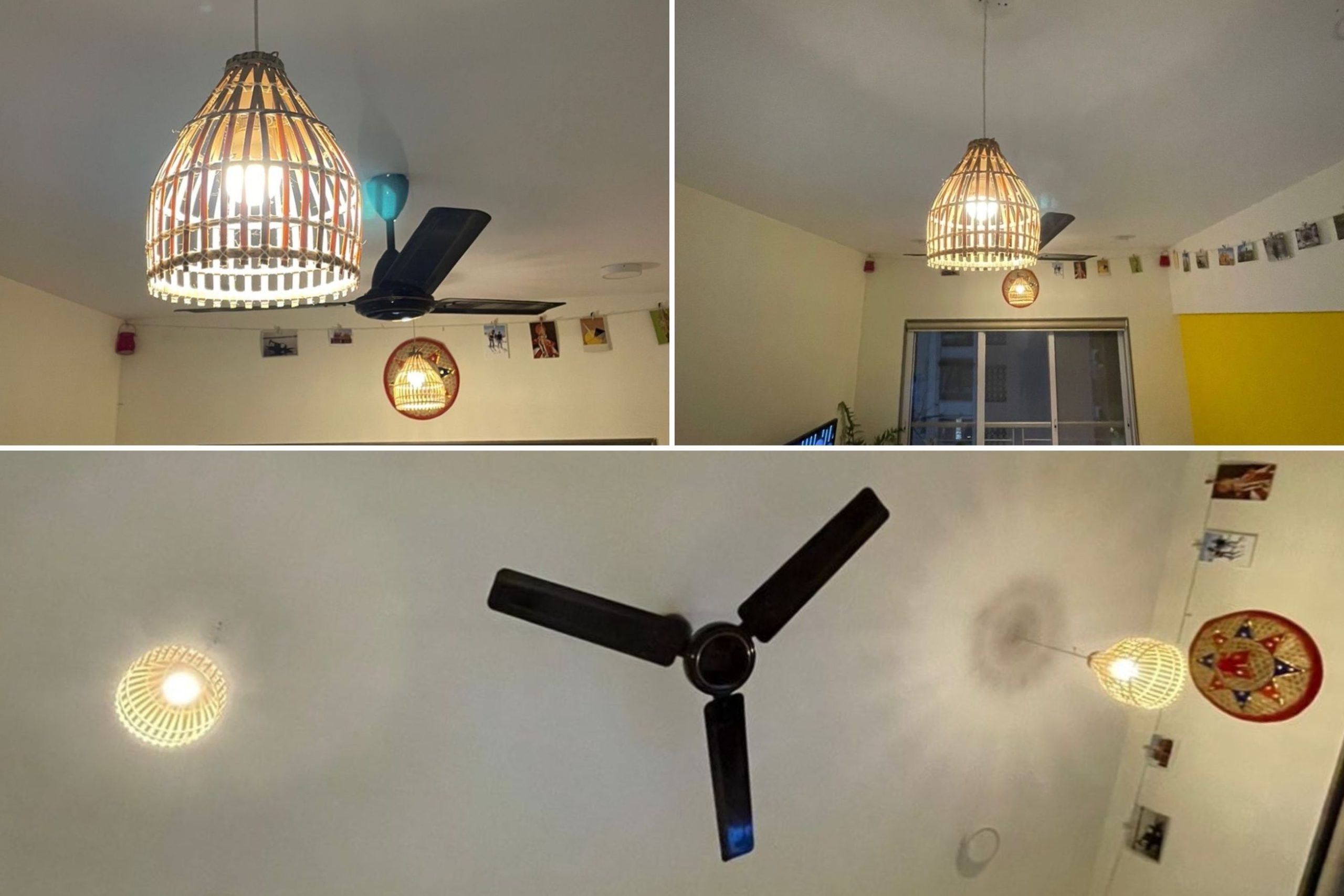
Gitima proudly presents her works of art - Cane Chandeliers
A few kilometers' drive from Mangaldoi in the Darrang district of Assam led me and my colleagues from Mission for Vision (MFV) and Sri Sankaradeva Nethralaya to a remote village populated by artisans and handicraft workers. Bamboo trees were used to form natural fences around each home as we arrived at Gitima’s (name changed) residence. Noticing her wearing the dark glasses that are usually provided to patients after cataract surgery, I inquired about her experience. She didn't respond to my question and walked away to a small mud house, presumably a storehouse. I worried I might have offended her or that she was preoccupied with other tasks. However, she soon returned carrying a stack of cane work, beaming with pride as she explained that this was the impact of her successful surgery.
This simple action moved me deeply and highlighted the profound impact of timely interventions by Mission for Vision and its partners. Gitima, a skilled 55-year-old artisan known for crafting intricate cane chandeliers and other artifacts, faced a challenging period when her sight got blurry due to a cataract. This loss of vision not only affected her craftsmanship but also diminished her income and shattered her self-confidence. Through word of mouth, she got to know about the Mangaldoi Vision Centre, established under the partnership of Sri Sankaradeva Nethralaya, Savitri Waney Charitable Foundation and Mission for Vision. After a comprehensive eye test, the VC team referred her to the base hospital at Guwahati for a no-cost cataract surgery. This high-quality surgery restored her vision, allowing her to return to her craft with renewed vigour. This intervention not only improved Gitima's financial situation but also fostered a sense of pride in her work, promoting empowerment for her and many other women like her.

Gitima happy to be back to work and shares the process of making cane chandeliers
Tackling Avoidable Blindness: A Global and National Challenge
The National Blindness & Visual Impairment Survey (2015-19) identified cataracts (71%) and refractive errors (13.4%) as the leading causes of visual impairment among individuals over the age of 50 in India. Globally, cataracts are responsible for nearly 51% of blindness, according to the World Health Organization's World Report on Vision. This age-related condition, along with barriers to eye health such as the availability, accessibility, affordability, and acceptability of eye care services, presents significant challenges. Visual impairment can severely affect an individual's quality of life, limiting their ability to learn, work, and participate fully in society. MFV’s research shows that interventions like cataract surgery led to significant improvements in visual acuity and quality of life, enhancing daily activities, mobility, and psychological well-being. Addressing avoidable blindness has profound economic and mental health benefits, not only for those affected but also for their families. Better vision boosts health, supports workforce participation, and improves educational outcomes for children.
Empowering Communities Through Restored Sight
To address the prevalence of eye health issues among socio-economically challenged communities, MFV’s Mission Jyot programme offers timely and high-quality eye care services. This initiative by MFV brings eye care closer to these communities through its Vision Centres (VCs) that are setup up in rural and semi-urban areas of the country. The VCs play a vital role by providing comprehensive eye screenings, dispensing spectacles, and referring patients to secondary hospitals for advanced treatment or surgeries when needed.
During the COVID-19 pandemic, when limited transportation and infection risks in urban areas prevented people from accessing care, these VCs ensured that communities received timely eye care without having to travel far. The proximity to the VCs helped prevent visual impairment due to access barriers.
Over the years, the Mission Jyot programme has positively impacted these communities by restoring vision and enhancing employability, productivity, and independence. The benefits extend beyond improved vision, freeing women and young girls from caregiving duties often required for visually impaired family members, thereby promoting social and economic progress.

Community Health Workers from Mangaldoi Vision Centre along with Gitima
One Final Request
With her vision restored, Gitima has returned to her art and regained her livelihood, no longer relying on others for mobility or income. As we prepared to leave, I asked if I could buy two of her beautifully crafted cane chandeliers for my new home. She playfully insisted that I pay the full market price, which we agreed upon. These chandeliers now serve as cherished souvenirs, symbolising not only the light brought back into Gitima's life and others like her but also adding warmth and beauty to my own home. Every time I switch on these lights, I am reminded not just of Gitima, but of countless lives transformed by the timely interventions of Mission for Vision and its partners, bringing hope and renewed independence to so many.

Gitima's cane chandeliers bring elegance and natural beauty to my home
About the Author:
Shrikant Ayyangar is the Lead for Communications at Mission for Vision, where he spearheads the organisation’s communications efforts and plays a key role in communication strategy, website management, social media outreach, media relations, content curation and branding activities.
